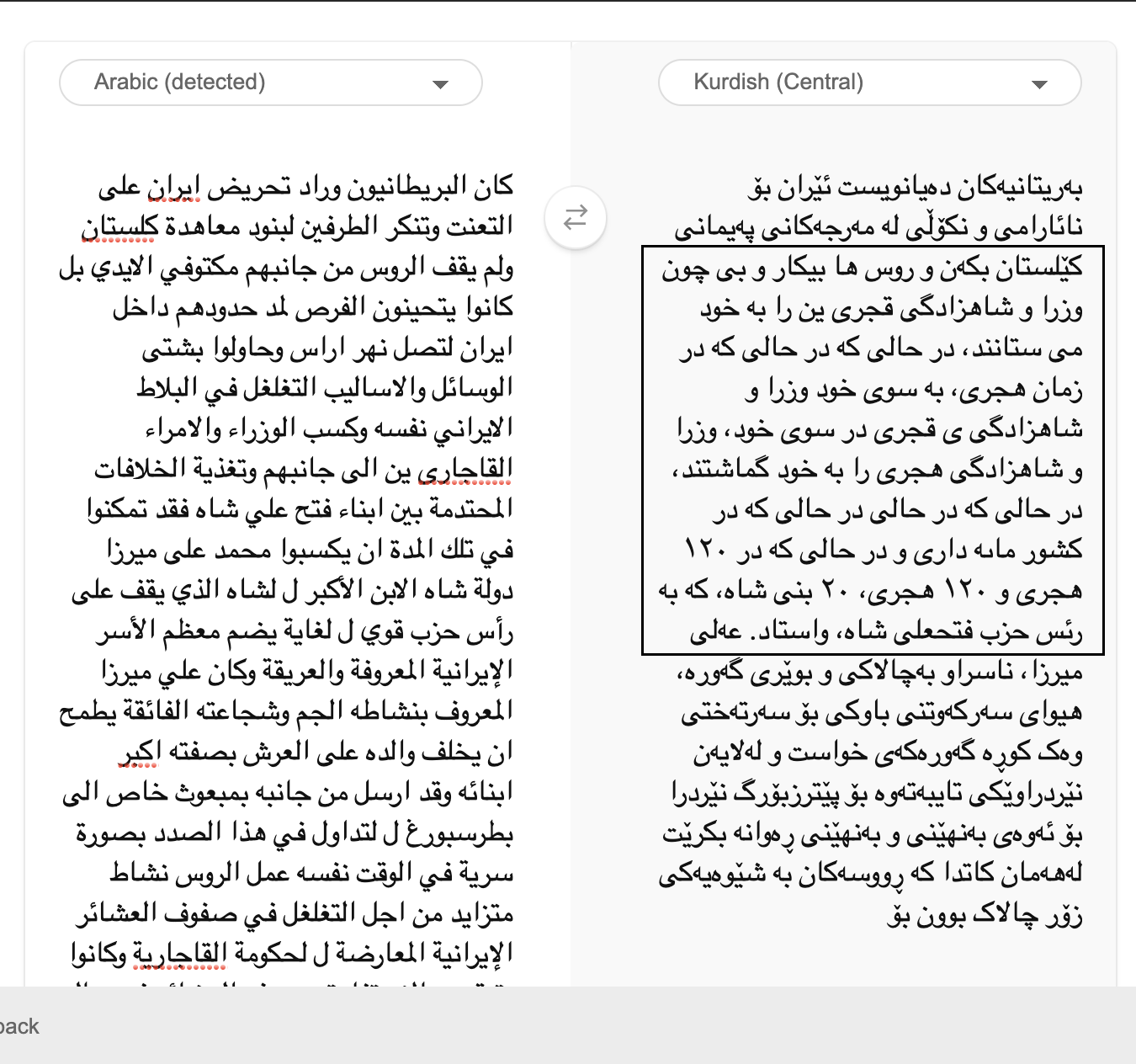Bedsides the problem mentioned above, many other problems are there with the translation that were not there before.
For example, sometimes when you send texts, it returns with 503 error. You can test it by sending the below text to the API
The Kurdish Crisis and Allied Intervention Raised Hammer'54) of about 5,000 soldiers from the United States, Britain, France, Italy, the Netherlands and Turkey, 55 remained positioned in the south of Turkey (Silopi and two other cities) to intervene in Iraq if necessary.56 These troops left on 10 October, but some American, British and French aircraft remained at the Turkish base of Incirlik. III. The Legality of the Allied Intervention From a purely moral and humanitarian point of view there scems to be little diffi- culty in welcoming the allied military intervention in Iraq to protect the Kurdish refugees. The assessment of the legality of the operation under intemational law, however, raises more complex issues. This is due to the prohibition of the use of force in Article 2, paragraph 4, of the United Nations Charter which, at least accord- ing to the prevailing view, has also become pant of general unwrituen international law. 57 It is also relevant in this connection that the prohibition of the use of force overlaps with the principle of non-intervenion in matters which are recognized by international law as being solely within the domestic jurisdiction of states.58 Thus, the Friendly Relations Declaration of 1970, in explaining the 'principle conceming the duty not to intervene in matters within the domestic jurisdiction of any State, in accordance with the Charter', clearly states that: No State or group of Stales hs the right to intervene, direcdy or indirectly, for any reason whatever, in the internal or external affairs of any oher State. Consequently, amed intervention and all other forma of interference or snempted threals against the 54 According to Huninger, npra sole 16, at 442 Other soerces menion the name Poised Hammer', NRC Handalablad 12 September 1991 au 12 55 Frankfwier Allgameine Zatung 23 September 1991 at 5, mantioning a figore of 4,600 allied sokdiers under American leadership 56 Honinger, supra noe 16, at 442, allegea thai thủa force was not only placed there to inservene in case the Irgi Govenument once more resortad to the masive use of force against is own civilans, but also in case cease-fire conditions were nol met. However, there is no indication that this paricular asembly of forces was designed to do more than protea the Kurda 57 See G Arangio Ruiz, Third Report on Siale Responsibility, Insemational Law Commission, Forty-third sesion, UN Doc. ACN 4/44VAdd.1, 19 July 1991, 8 et sng with references and a discusrion of minority views advocating that there are still forms of unilaleral (individual or collective) resort to force which may be invoked under the concepu of armed reprisals or sell defence. See also Malancnk, 'Countermeasures and Sell-defence ss Ciramstances Precluding Wrongfulness in the Insemational Law Commirsion's Draft Aricles on Sute Responsibility, in M. Spinedi, B. Simma, United Nations Codificalion of State Ruponsibility (1987) 197, 212 et seg 58 For details see Oppemann, 'Intervation', in R

